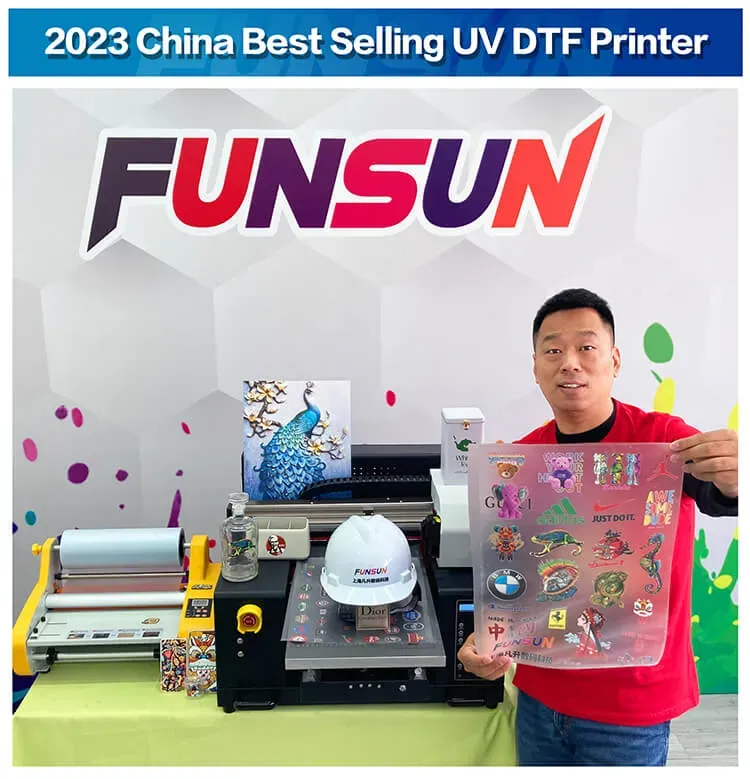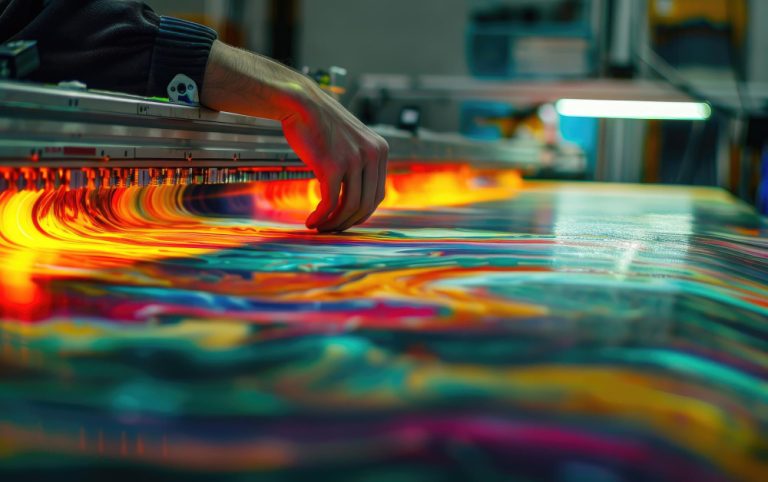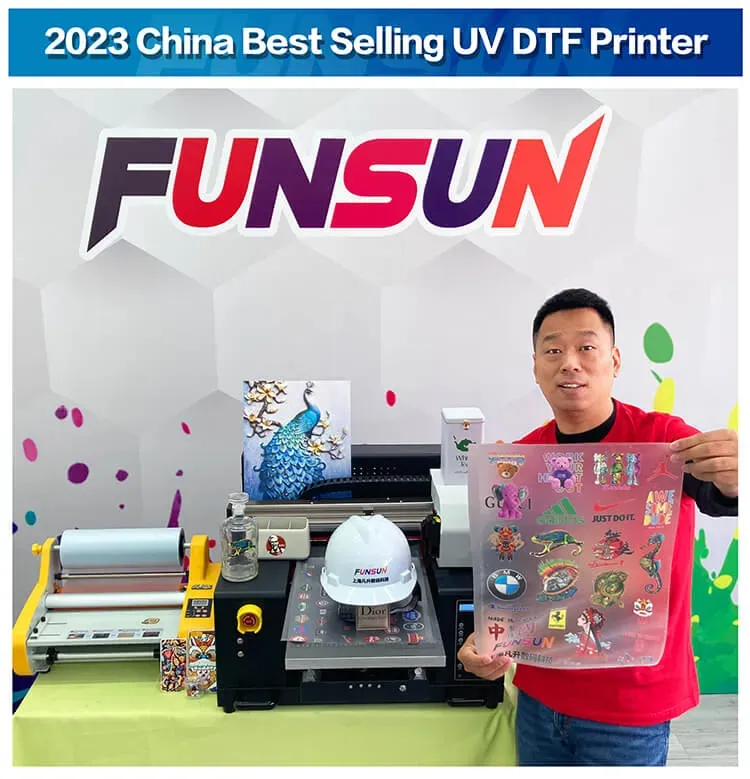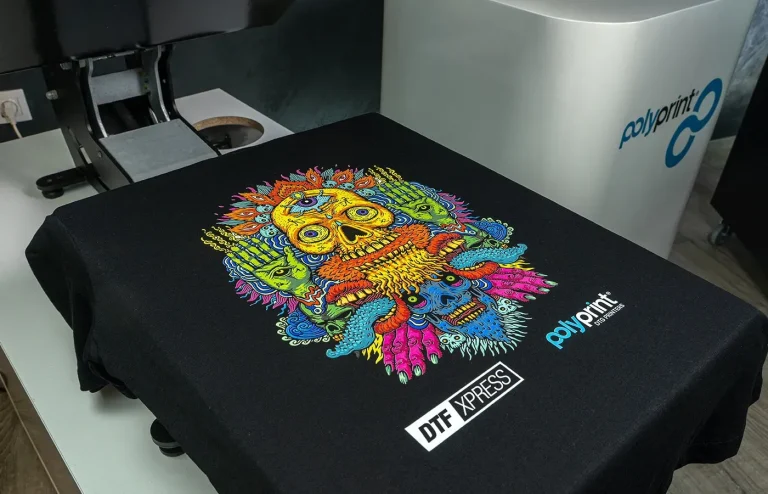UV DTF Printing: The Future of Sustainable Printing
UV DTF printing is revolutionizing the landscape of the printing industry by combining cutting-edge UV printing technology with innovative direct-to-film printing techniques. This powerful method harnesses the advantages of ultraviolet light to cure inks rapidly, resulting in stunning color fidelity and versatility across a myriad of substrates. As businesses increasingly demand sustainable printing solutions, UV DTF has emerged as an eco-friendly alternative, emitting fewer volatile organic compounds compared to traditional methods. The rapid printing capabilities of UV DTF cater to the booming custom apparel printing market, ensuring that designers can deliver high-quality products in record time. With the printing market growth on the rise, UV DTF is poised to take center stage as a leading choice for manufacturers seeking to enhance their branding and production strategies.
Known also as ultraviolet direct-to-film printing, this innovative printing technology represents a significant advancement in how graphics are produced on flexible film substrates. By utilizing the efficiency of UV-curable inks, this method eliminates the need for time-consuming pre-treatments, streamlining the entire process and enhancing productivity. The compatibility of this approach with various materials enables unprecedented possibilities for customizations in a wide variety of industries. Eco-conscious companies are particularly drawn to this technique due to its sustainable printing solutions, which prioritize reduced environmental impact. As the demand for unique, high-quality printed products grows, methods like ultraviolet DTF printing are reshaping the future of the printing sector.
The Evolution of UV DTF Printing Technology
UV DTF printing has revolutionized the traditional methods of printing by introducing a unique technology that combines the advantages of UV curing and film transfer. This innovation allows businesses to achieve vibrant prints that stand out, while also accommodating a variety of substrates such as textiles, plastics, and metal. The actual process involves printing high-quality graphics onto a specially coated film which is then cured using UV light, ensuring that the colors are locked in instantly with exceptional clarity. This cutting-edge approach enhances both the quality and versatility of prints, significantly pushing the boundaries of what is possible in modern printing.
As the industry embraces advanced techniques, the transition to UV DTF printing signifies a monumental change in production speed and efficiency. Traditional printing methods typically require extensive preparation and drying time, often resulting in delays and increased costs. However, UV DTF eliminates these hurdles by using a direct-to-film approach, streamlining the process and enabling manufacturers to meet tight deadlines without compromising on quality. Thus, businesses can respond more effectively to market demands while leveraging the outstanding capabilities of UV DTF technology.
Key Benefits of UV DTF Printing
One of the standout benefits of UV DTF printing is its ability to deliver exquisite color and detail, which is essential for a wide range of applications. The inks used in this process cure immediately under ultraviolet light, resulting in exceptionally vivid prints that maintain sharpness and accuracy. This capability is particularly advantageous for custom apparel printing, where brands are seeking to make a lasting impression with intricate designs and bold colors. As a result, UV DTF has become a go-to solution for fashion designers and marketers who desire high-quality, eye-catching graphics that resonate with consumers.
Moreover, the eco-friendly aspect of UV DTF printing cannot be overlooked. As sustainability continues to shape consumer preferences and corporate responsibilities, UV DTF printing emerges as a viable option with reduced environmentally harmful emissions. The process generates fewer volatile organic compounds (VOCs) compared to traditional printing methods, aligning with global initiatives aimed at minimizing carbon footprints. By opting for UV DTF, companies not only enhance their brand image as accountable entities but also contribute positively to environmental conservation efforts.
Emerging Applications of UV DTF Technology
The versatility of UV DTF printing technology has led to its adoption across various sectors beyond conventional printing tasks. In the fashion industry, for instance, designers are increasingly leveraging UV DTF to produce custom apparel with intricate designs that cater to rapidly changing market trends. With its capacity to print on diverse fabrics and materials, UV DTF allows for a wealth of creative expression, enabling brands to offer unique and personalized clothing items that resonate with their target audience.
Similarly, the promotional products sector has recognized the potential of UV DTF for creating standout items that capture consumer interest. Businesses are utilizing this technology to produce promotional merchandise that features vibrant graphics and customized designs, ensuring their brand message is effectively communicated. From customized promotional giveaways to high-quality corporate gifts, the adaptability of UV DTF technology is driving innovation in marketing strategies, helping companies to distinguish themselves in increasingly crowded markets.
Market Growth and Trends in UV Printing
The global printing market is experiencing significant growth, with UV printing being a standout segment projected to expand at a compound annual growth rate (CAGR) of over 10% in the coming years. This growth is largely driven by increasing demand from key sectors such as packaging, textiles, and consumer goods, where high-quality and durable printing solutions are essential. As businesses continue to prioritize efficiency and sustainability, UV DTF printing paves the way for a new era in the printing landscape.
Furthermore, the trend toward customization and personalization is fueling the demand for innovative printing techniques like UV DTF. Consumers today are looking for products that reflect their individuality, prompting brands to explore customized printing solutions. As a result, companies are increasingly investing in UV DTF technology to meet these evolving expectations and stay competitive in a dynamic market. The continuous evolution of UV printing technology opens up new possibilities for growth and development across numerous industries.
Considerations for Adopting UV DTF Technology
While the benefits of UV DTF printing are compelling, businesses must also weigh certain challenges associated with its implementation. The initial investment costs for UV DTF printing equipment and materials can be substantial, often posing a barrier for smaller businesses. Alongside this, there is a necessity for skilled personnel who are trained in the nuances of UV printing technology to achieve optimal results. Companies must therefore plan for comprehensive training programs and consider ongoing support to ensure the effective use and maintenance of their UV DTF systems.
Moreover, as with any technology, staying updated on the latest advancements and best practices is crucial for maximizing the potential of UV DTF printing. Businesses need to regularly invest in training their staff and upgrading equipment where necessary to keep pace with the industry’s rapid evolution. By addressing these considerations head-on, companies can not only enhance their printing capabilities but also unlock the full benefits of UV DTF, positioning themselves for success in an increasingly competitive market.
The Future Outlook of UV DTF Printing
The future of UV DTF printing holds substantial promise as the technology continues to evolve and mature. With advancements in ink formulations and curing systems, we can expect even greater color accuracy and flexibility in substrate compatibility. This evolution will likely enhance the technology’s appeal across a broader range of industries, ultimately driving further market growth. As manufacturers innovate and explore new applications for UV DTF printing, they will unleash creative opportunities that will redefine the possibilities of custom printing.
Additionally, the integration of UV DTF printing technology into digital workflows signifies a transformational shift in production methods. Automation and digital processes not only help streamline operations and reduce turnaround times but also enable companies to offer personalized products with greater efficiency. As businesses implement these forward-thinking strategies and focus on sustainable practices, they will be well-positioned to lead the charge in the printing revolution, contributing to a more dynamic and responsive marketplace.
Frequently Asked Questions
What is UV DTF printing and how does it work?
UV DTF printing, or UV Direct-to-Film printing, is an innovative printing technology that uses ultraviolet light to cure inks on specialized films. This method provides a quick and efficient way to produce high-quality prints on a variety of substrates such as textiles, plastics, and metals, bypassing the need for substrate pre-treatment.
What are the advantages of using UV DTF printing for custom apparel?
One significant advantage of UV DTF printing for custom apparel is its ability to produce vivid colors and intricate details quickly. The UV curing process ensures immediate drying and durability, making it an ideal solution for designers and businesses seeking to create unique, high-quality clothing prints efficiently.
How does UV DTF printing contribute to sustainable printing solutions?
UV DTF printing contributes to sustainable printing solutions by emitting fewer volatile organic compounds (VOCs) during the printing process, making it an eco-friendly option. As businesses prioritize reducing their carbon footprint, UV DTF stands out for its efficiency and lower environmental impact.
What trends are shaping the growth of the UV printing market, particularly in UV DTF technology?
The UV printing market, especially UV DTF technology, is seeing growth driven by increased demand in sectors like packaging and textiles. With a projected compound annual growth rate (CAGR) of over 10%, the technology is gaining traction as industries seek high-quality, sustainable, and versatile printing solutions.
Can UV DTF technology be used for promotional products?
Yes, UV DTF technology is highly effective for creating promotional products. Its ability to produce vibrant graphics on various surfaces makes it a preferred choice for businesses looking to develop unique and eye-catching promotional items that resonate with customers.
Are there any challenges associated with adopting UV DTF printing?
Challenges in adopting UV DTF printing include the initial investment costs for purchasing and maintaining UV equipment, as well as a potential learning curve for staff getting accustomed to the new technology. Proper training and maintenance are essential to ensure the technology delivers its promised benefits.
| Key Points | Details |
|---|---|
| What is UV DTF Printing? | An advanced printing method using UV-cured inks on films, allowing for high-quality prints on varied substrates without pre-treatment. |
| Advantages | 1. Vibrant Colors 2. Fast Turnaround 3. Eco-friendly 4. Compatibility with various substrates |
| Market Trends | The market for UV printing is growing at a CAGR of over 10%, driven by demand in packaging, textiles, and consumer goods. |
| Applications | Custom Apparel, Promotional Products, Industrial Applications |
| Challenges | High initial investment, learning curve, and need for proper maintenance and training. |
Summary
UV DTF printing is a revolutionary method that is shaping the future of the printing industry. This innovative technology employs UV light to cure inks directly onto films, enabling unparalleled vibrancy and detail in printed designs. The advantages of UV DTF printing—such as rapid production times, compatibility with various materials, and a commitment to eco-friendly practices—position it as a forward-thinking solution for modern businesses. As market demand continues to grow, driven by its application across sectors like fashion and packaging, UV DTF is not only poised to innovate the way prints are produced but also to enhance sustainability in the printing processes. With its increasing adoption, UV DTF printing is set to redefine industries and create exciting opportunities in a wide array of applications.






